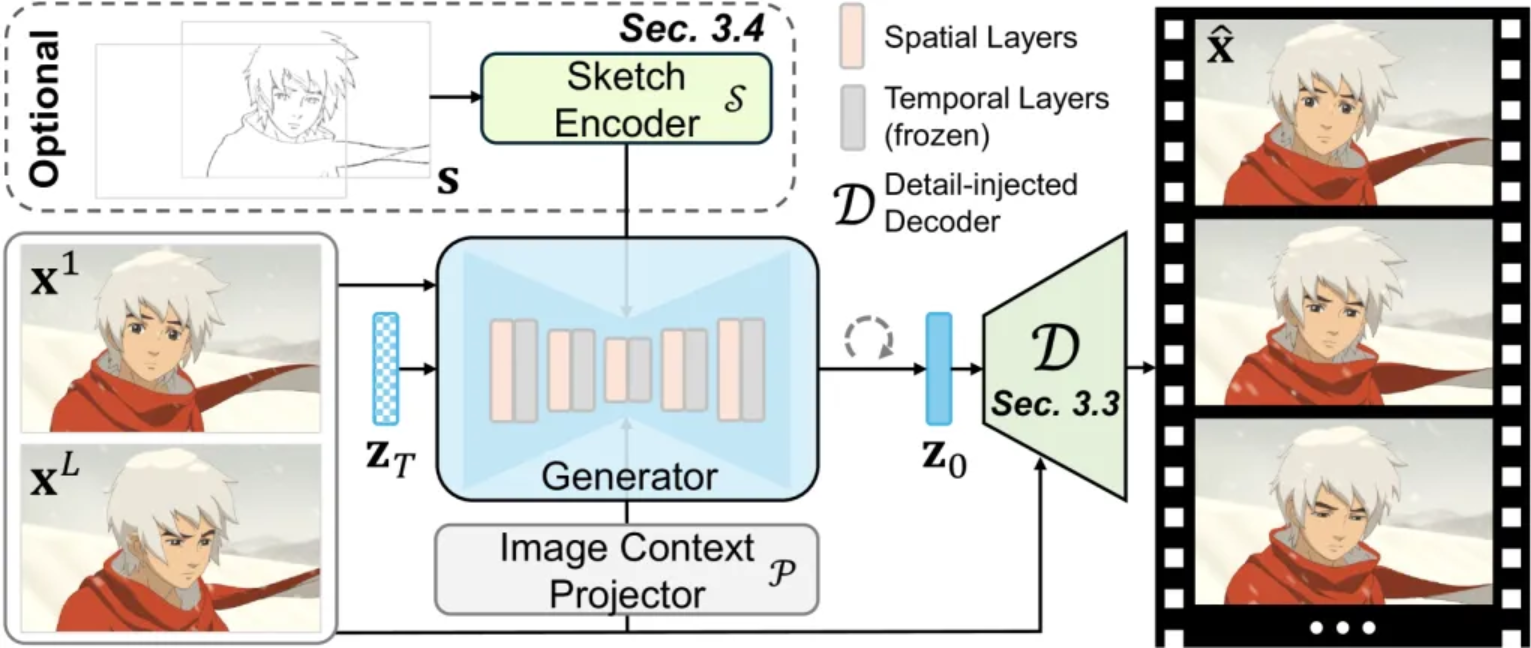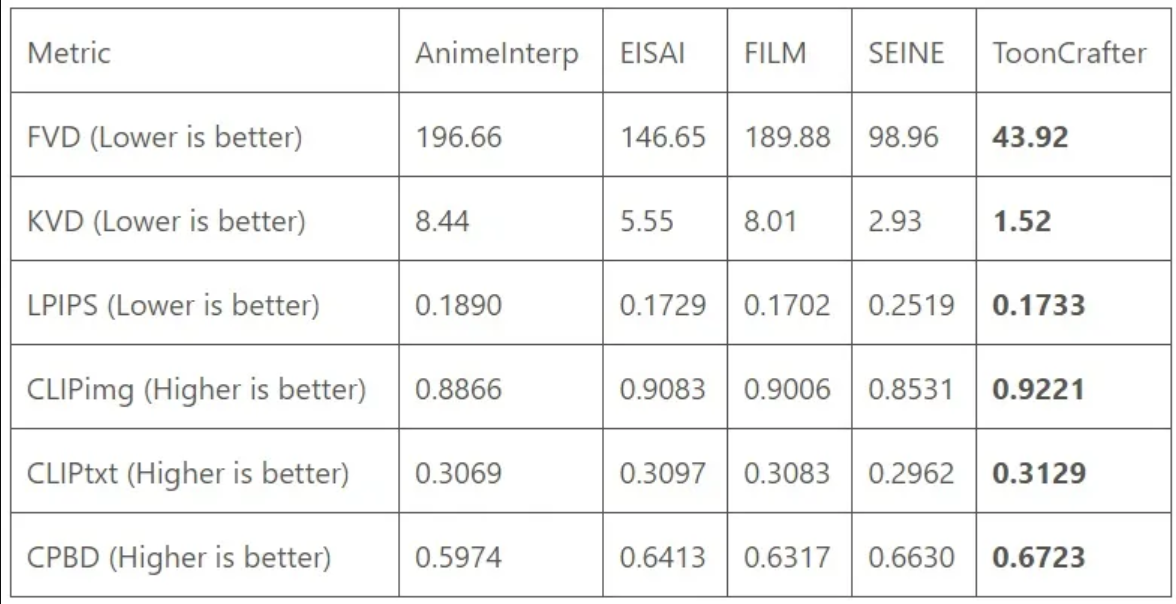ToonCrafter: Generating Fluid Cartoon Motion from Still Images
Animation, with its power to bring static images to life, has captivated audiences for generations. From the fancy worlds of cartoons to the intricate narratives of animated films, this art form holds a unique ability to spark imagination and evoke emotions. Yet, behind the illusion of movement lies a painstaking process demanding artistic talent and countless hours of dedicated work.
The Challenge of Cartoon Animation
Cartoon animation, in particular, presents unique challenges due to its distinctive style and the traditional methods used in its creation. While advancements in video interpolation have eased the burden for live-action footage, traditional methods fall short when applied to cartoons.
The heart of the problem lies in the inherent differences between the two mediums. Cartoons are characterized by:
1. Frame Sparsity
Due to the high cost of drawing each frame, cartoons have fewer frames per second compared to live-action videos. This results in larger, more abrupt movements between frames.
2. Texture Simplicity
Unlike live-action footage rich in detail, cartoons often feature large areas of flat color to simplify the animation process.
These characteristics pose significant challenges for traditional interpolation techniques which rely on assumptions of smooth, linear motion and struggle to handle the exaggerated movements and textureless regions common in cartoons.
A New Dawn: Introducing ToonCrafter
ToonCrafter emerges as a game-changer by emphasizing a novel concept: generative cartoon interpolation. Instead of simply filling in the gaps between existing frames, ToonCrafter leverages the power of artificial intelligence to synthesize new frames, breathing life into static images.

This innovative framework builds upon the success of DynamiCrafter, a state-of-the-art image-to-video diffusion model pre-trained on a massive dataset of live-action videos that has a strong understanding of realistic motion dynamics, a crucial foundation for generating believable animation. ToonCrafter takes this foundation and adapts it to the unique demands of cartoon animation through three key innovations:
1. Toon Rectification Learning: Bridging the Domain Gap
To bridge the stylistic chasm between live-action and cartoon animation, ToonCrafter employs a toon rectification learning strategy. This involves fine-tuning the pre-trained video diffusion model on a massive dataset of high-quality cartoon videos. The model learns the specific nuances of cartoon motion and aesthetics without sacrificing the robust motion understanding acquired from its initial live-action training.
Think of it like this: imagine a talented chef trained in classic French cuisine. To master the art of sushi, they wouldn’t discard their existing culinary skills. Instead, they would adapt their techniques and knowledge to this new style, incorporating new ingredients and methods. Similarly, ToonCrafter refines its understanding of motion to specifically suit the cartoon world.
2. Detail Injection and Propagation: Preserving Visual Fidelity
One challenge of using diffusion models is the potential loss of detail during the generation process. To address this, ToonCrafter introduces a dual-reference-based 3D decoder. This decoder analyzes the pixel-level details of the input frames and intelligently injects this information into the generated frames, ensuring visual consistency and preventing artifacts.
Imagine building a bridge between two cliffs. Instead of just connecting the two endpoints, you would need supporting pillars and cables to maintain the bridge’s structural integrity. The dual-reference decoder acts like these supporting structures, ensuring the generated frames remain faithful to the original artwork. In summary, it shows how the first frame and the last frame should be.
3. Sketch-Based Controllable Generation: Empowering Artists
ToonCrafter empowers animators with fine-grained control over the interpolation process through sketch-based guidance. Artists can provide simple sketches to guide the generation of intermediate frames, ensuring specific poses or movements. This interactive control streamlines the animation workflow and facilitates creative exploration.
Think of it as providing a roadmap to ToonCrafter. Instead of letting the model navigate blindly, artists can sketch out key poses, giving the model clear directions for generating the desired motion.
ToonCrafter in Action: Outperforming the Competition
Rigorous testing reveals ToonCrafter’s dominance over existing methods. It excels in generating natural and plausible motion, even in challenging scenarios with large, non-linear movements and occlusions, that are situations where traditional methods often falter. Quantitative metrics confirm its superiority, showcasing significant improvements in visual quality, temporal coherence, and semantic accuracy.

But the true magic of ToonCrafter lies in its visual results. Where previous methods produced jerky, unnatural motion or introduced artifacts, ToonCrafter delivers smooth, fluid animation that stays true to the original artistic style.
Beyond Interpolation: Expanding Creative Possibilities
ToonCrafter’s potential extends far beyond simple frame interpolation. Having a lovely Apache 2.0 License, it opens up exciting new possibilities for animators, including:
- Sketch-to-Animation: Imagine transforming a series of rough sketches directly into a fully animated sequence… ToonCrafter makes this a reality!
- Reference-Based Colorization: Bring life to black and white sketches by providing color references from existing artwork. ToonCrafter can intelligently apply these colors to create vibrant, finished illustrations.
Start crafting a toon yourself, trying ToonCrafter playground here.